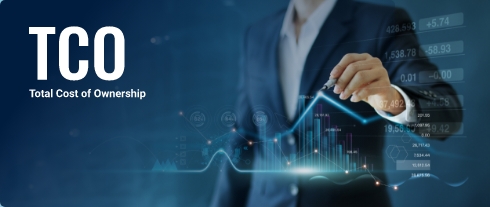What is the Total Cost of Ownership (TCO) in Intelligent Automation Solutions?
- Featured Insights
- March 16, 2023
Implementing new technologies is what every enterprise must do to sustain, survive, and grow in the cutthroat global business landscape. But the adoption of new technologies brings with it an unavoidable financial impact, which often entails fresh challenges for enterprises that seek to minimize their expenditure and maximize their return on investment.
The Total Cost of Ownership or TCO examines this financial impact and assesses a broader view of the investment. Identifying the TCO, thus, is key to estimating the Return on Investment (ROI).
Understanding TCO in IA Solutions
The Total Cost of Ownership for IA solutions includes all direct and indirect costs associated with licenses, infrastructure, development, implementation, maintenance, and support of the automation program.
Enterprises employing process & intelligent automation primarily focus on lower costs, faster results, and more tangible returns. Considering the TCO of the automation solutions can provide the enterprises with deep insights about its feasibility, potential, and effectiveness.
By analyzing the TCO, organizations can determine the difference between short-term (impulse buy) and long-term (TCO) costs, ensure accuracy in numbers, identify surprise expenditures, and make better-informed decisions. Overall, TCO helps enterprises recognize cost-saving opportunities and ensures a higher probability of success. Thus, in short, the lower the Total Cost of Ownership, the higher value the organization gains in the long run.


Total Cost of Ownership (TCO)
Key Components
- 01.Upfront Costs – These include the costs associated with the initial development and implementation of the automation program.
- 02.Ongoing Costs – These include the costs associated with the day-to-day maintenance and support of the automation program.
- 03.Hidden Costs – These include the unforeseen and indirect costs associated with the automation program.
Upfront Costs
Ongoing Costs
Hidden Costs
Want to learn more about TCO? Get the TCO Checklist.